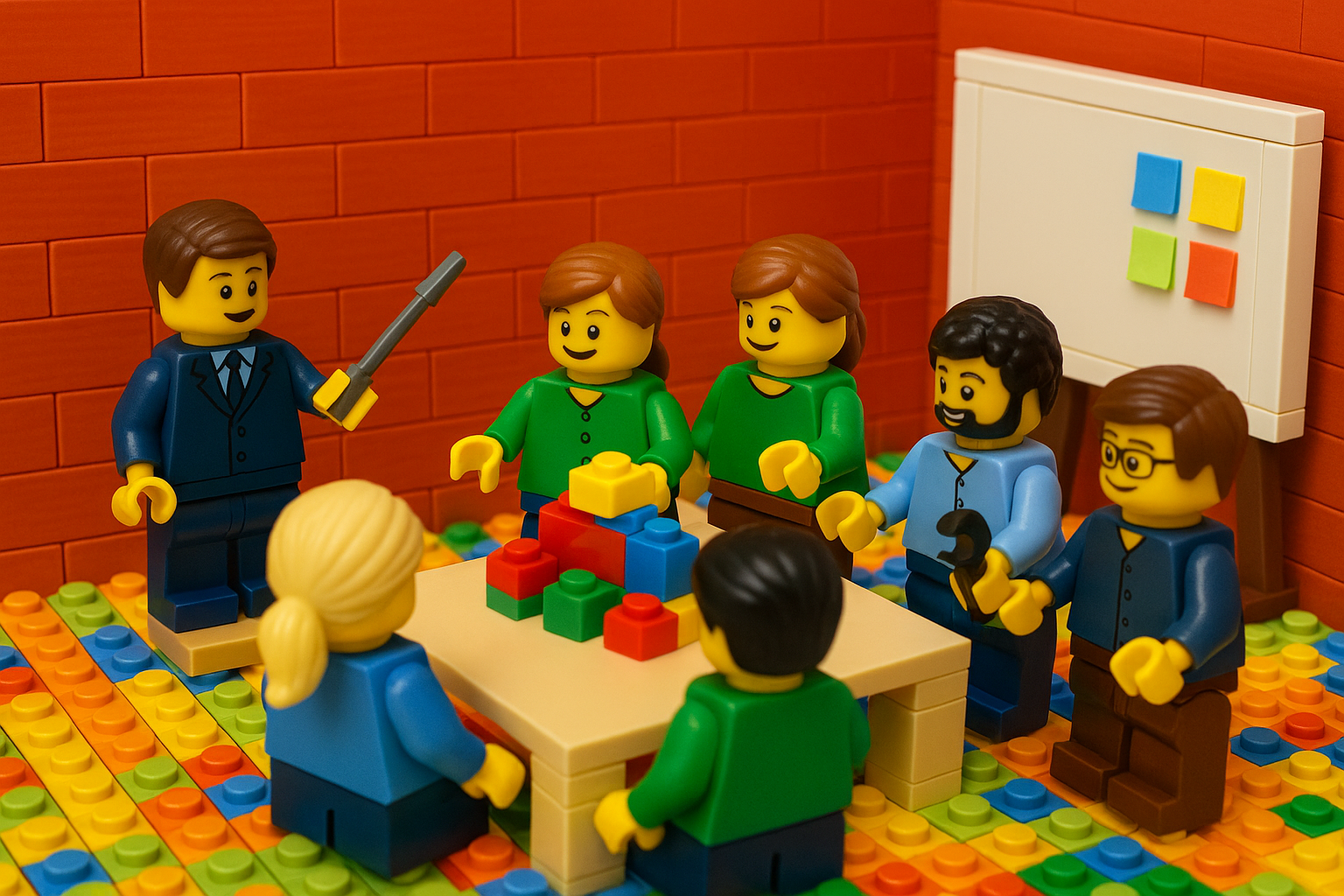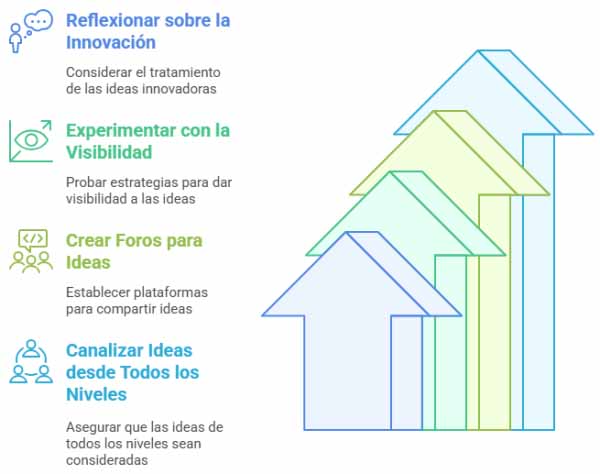
You implement Scrum. You incorporate new tools. You launch initiatives all over the place. And yet… something doesn’t quite click. Decisions continue to take time, people don’t dare to experiment, value is diluted and initial enthusiasm turns into burnout.
What is going on?
When an Agile transformation advances superficially but does not permeate the culture, there are often invisible barriers that block real change. From our Agile consulting at SmartWay, we see it often: the culture continues to operate with the logics of the past.
Here are some of those anti-Agile symptoms that often go unnoticed. Detecting them is the first step to transform them.
Safety is valued… but error is punished
Ask yourself: How does your organization react to a well-intentioned failure? Does it turn it into a resource… or a punishment?
It is said that nothing happens if you make a mistake… until you make a mistake. And then come the reproaches, the reports copied to half the organization, the meetings so that “it won’t happen again”. The mistake becomes a sign of incompetence, not exploration.
Teams learn the lesson quickly: better not to take risks, better to follow the script. Better to appear efficient than to be brave.
When mistakes are penalized, innovation is extinguished. No one experiments if making mistakes means exposing themselves. And without experimentation, there is no learning. Without learning, there is no agility.
Act: Normalize mistakes as a natural part of learning. Celebrate discoveries, not just successes. Introduce practices such as no-blame post-mortems, shared learning stories and environments where failing fast and cheap is part of the design. If you lead, take the first step: share your own mistakes and what you learned from them. At SmartWay Agile Consulting, we help create cultures where failure isn’t scary: it’s informative.
Proactivity is required… but obedience is rewarded.
Reflect: What happens to those who raise their hands and propose something different? Are they listened to… or are they located?
Many companies claim to want people who are proactive, who think, who act. But decisions remain in the hands of a few. New ideas have to pass through too many filters. Uncomfortable proposals go cold. Little by little, the energy dies out. People execute without getting involved, comply without questioning.
Obedience becomes the safest path. And proactivity, an unnecessary risk.
Experiment: Observe what behaviors are recognized in your organization. Are those who propose improvements visible, even if they are not implemented? Create real spaces to gather ideas from all levels. And actively protect those who dare to point out what is uncomfortable. Psychological security is not built by saying you can talk, but by demonstrating that talking is useful.

Everyone is busy… but the value is not flowing.
Analyze: How much of the daily effort actually reaches the customer? What slows that flow?
Agendas are full. Projects pile up. People are working flat out. But the results don’t come.
It is planned without prioritizing. It is produced without validation. The use of resources is optimized, but not the impact. Time invested is measured, not value delivered. In this constant noise, what is important is lost.
Being busy becomes a form of status. But being busy is not synonymous with moving forward. Sometimes it’s just a fancy way to stagnate.
Implement: Visualize the work in progress. Map the value stream. Identify bottlenecks. Ask frequent questions: Who is this thing we are doing, what value does it generate, what could we stop doing?
Introduce dynamics such as stop starting, start finishing and prioritize delivery over occupancy. Sometimes, less is much more. In our Agile consulting, we work with teams to bring the focus back to real value.
In addition, to better understand flow efficiency and resource efficiency, I recommend the book This is Lean!
Collaboration is talked about… but it’s done from the silo
Detects: How many decisions are made with the whole in mind? How many are held back by invisible barriers between areas?
Joint meetings are held, shared channels are opened… but when it’s time to decide, each department defends its own ground. Each area has its metrics, its interests, its priorities. The perimeter is protected, the problem is moved, the system is lost sight of.
The consequence: cross-cutting initiatives are slowed down, coordination becomes a struggle and the team discourse remains just that, a discourse.
Integrate: Redesign objectives from individual to shared. Encourage cross-functional projects. Create cross-functional metrics and indicators. Introduce tools such as Value Stream Mapping -which we use in SmartWay’s Agile consulting-to visualize real collaboration (or lack thereof). Change the language from “my team” to “our system”.
Have you tried Value Stream Mapping?
Planning in detail… but the value is ignored
Ask yourself: What weighs more heavily on your organization: finishing what was promised… or delivering what really matters?
Many projects start with detailed plans, perfect timelines, well-scheduled tasks. But no one validates whether it still makes sense two weeks later. Promises are delivered, even if they are worthless. Punctuality is celebrated, even if nobody uses it.
Compliance is rewarded. Adaptation is punished. And so, the organization becomes excellent at executing the irrelevant.
Facilitates: Prioritizes purpose over plan. Open short review cycles. Constantly evaluate whether what you’re delivering still makes sense. Change the conversation from when do we finish it? to what do we do it for? We work on this frequently in SmartWay’s Agile consulting, where planning is no longer an excuse to stop thinking.
Quick decisions are made… but without data
Question yourself: How many key decisions are made on the basis of verified information, and how many are based on perceptions alone?
Many decisions seem agile because they are made quickly. But speed is not always synonymous with intelligence.
Decisions are made based on intuition, urgency or pressure. Experience is valued more than evidence. Feedback is ignored, analysis is skipped, and the most serious thing: no one questions it.
When an organization is not trained to look at data, it becomes hostage to opinions. And that’s not agility, it’s chance.
Redesign: Make relevant data visible. Start simple: usage metrics, customer feedback, team observations. Use that data as a starting point, not as a final annex. And if there is no data, make it your priority to create it. At SmartWay Agile Consulting, we help teams turn intuition into hypothesis, and decision into validated learning.

There are values on the wall… but not in the conversations.
Recognizes: How often do you use values as a real criterion for deciding? Or are they something that is mentioned in speeches and then forgotten?
Corporate values are on posters, presentations, onboardings… but not in meetings, nor in complex decisions.
And when values are not present in difficult moments, they lose all their strength. The team learns to separate what is said from what is actually done. It becomes a decorative culture.
Support: Bring values to the center. To decisions. To conflicts. Ask out loud: What value is challenged here? What would we choose if we acted from what we say we are? In our Agile consulting, we help teams translate values into daily action. Because when values guide decisions, they stop being signs… and become a living culture.
Changing the culture is not a project. It is a daily practice.
When we talk about agility, it is easy to focus on frameworks, on ceremonies, on tools. It is what is visible. It’s what can be trained, measured, scheduled.
But that’s just the surface. What really transforms or blocks an organization is its culture.
And culture does not change by decree. It changes when conversations, decisions, priorities change. It changes when permission is given to act differently. When someone – even one – decides to do it differently.
At SmartWay we know: blockages in the Agile culture are not solved with methodologies, but with courage, coherence and accompaniment. That’s why we work on transformation from within, with real leaders, real teams and real contexts.
Are you ready to detect and unblock the symptoms that are holding back your culture?
Find out how we work on it from our Agile consultancy.



